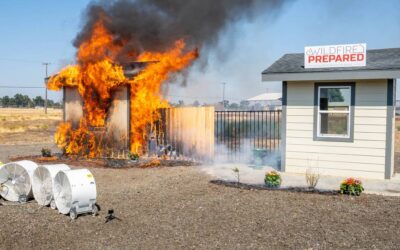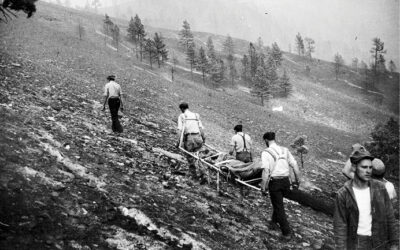Wildfire has burned 220 square miles since April 6

In this Tuesday, Sept. 24, 2013 file photo, a DC-10 airplane tanker drops fire retardant to battle a wildfire in the San Gabriel Mountains in Azusa, Calif. Forecasters are predicting significant wildfire activity this summer across the Southwest, Florida, Georgia, as well as in portions of California and Nevada. (AP Photo/Nick Ut, file)
RUSS BYNUM, Associated Press
Firefighters called up a giant air tanker to attack a rapidly growing wildfire that threatened homes Tuesday on the edge of the Okefenokee Swamp near the Georgia-Florida state line.
The modified DC-10 jet liner, capable of dumping 11,600 gallons (44,000 liters) of chemical fire retardant in a single run, was joining nearly 700 firefighters and support personnel working to contain the blaze with bulldozers, helicopters and smaller planes.
The fire was burning Tuesday within a few miles (kilometers) of the small, towns of St. George and Moniac in southeast Georgia. Emergency officials in surrounding Charlton County ordered those communities to evacuate as flames crept close Sunday.
James Burnsed of Moniac remained at home Tuesday, though he said he could see the orange glow of flames through the trees outside his house Monday night. He said most of his neighbors had also stayed and were running lawn sprinklers in their yards in hopes grasses and plants wouldn’t burn.
“It’s absolutely not the best idea,” Burnsed said. “We just don’t want to lose our stuff and we want to protect it if we can.”
The fire has burned roughly 220 square miles (570 square kilometers) since a lightning strike ignited the blaze April 6 inside the Okefenokee National Wildlife Refuge. The flames mostly stayed on public lands and posed no threat to populated areas until Saturday, when strong winds pushed the fire across the protective barrier plowed around the swamp’s perimeter.
The multi-agency command team fighting the fire had reported no homes burned. But it warned hot, dry conditions Tuesday could cause the fire to spread rapidly.
“It’s going to be ideal for extreme fire behavior and a high potential for fire growth,” said Tom Stokesberry, a spokesman for the fire team.
Fire officials said in a news release the DC-10 air tanker was set to make two flights over the blaze Tuesday. It was taking off and landing at Chattanooga, Tennessee, nearly 400 miles (645 kilometers) northwest of the fire.
The giant tanker can carry four times as much retardant as any other firefighting plane, according to the website of 10 Tanker Air Carrier, the company that contracts with the U.S. Forest Service to provide the planes. It says the aircraft can deploy an unbroken stream that’s 50 feet (15 meters) wide for a distance of two-thirds of a mile (1 kilometer).
The Federal Emergency Management agency said Tuesday it has authorized disaster relief grants to reimburse Georgia agencies for their costs associated with fighting the fire.
The National Weather Service forecast showed no chance of rain in the areas of the fire until Friday evening. It was unclear how long the evacuation orders would stand, or if they might need to be expanded.
“We don’t know how long this will go on,” said Susan Heisey, supervisory ranger for the Okefenokee refuge and a fire spokeswoman. “But it’s better to be safe than sorry.”
Copyright 2017 The Associated Press. All rights reserved. This material may not be published, broadcast, rewritten or redistributed.




